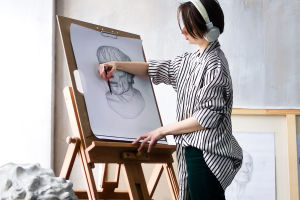Using an analog film camera is a completely different experience from digital photography. Each shot we take is unique, and we won't see the result until the film is developed.
Unlike digital cameras, film relies on light and chemical reactions to capture images, giving each photo a special texture and depth.
Today, we'll explore why these cameras continue to fascinate photographers of all levels and why more of us are rediscovering their charm in a digital world. Whether we're hobbyists or professionals, analog photography offers something that pixels alone just can't provide.
How Analog Cameras Work
Analog film cameras capture images by exposing light-sensitive film to light. The film contains chemicals that react to light, recording the scene frame by frame. After shooting, we can't immediately see the results—we must develop the film to reveal the images. Unlike digital cameras that store pictures electronically and allow instant editing, every frame on film is unique and finite. This limitation teaches us to slow down, plan our shots carefully, and truly appreciate the moments we capture.
Different Types of Film Cameras
Film cameras come in many forms, each with its own advantages. The 35mm camera is light, portable, and perfect for everyday photography, whether we are walking through city streets or traveling abroad. Medium format cameras, like the Hasselblad 500C, produce larger negatives with incredibly detailed images, making them ideal for professional portraits, landscapes, and studio work.
Large format cameras offer even higher resolution, though they are bulkier and require more patience and technical skill. Each type of camera allows us to express our style differently, and choosing the right one can shape our creative vision.
The Decline of Film and Its Comeback
With digital cameras becoming popular, analog film cameras gradually became less common. Shooting on film requires buying rolls, adjusting exposure manually, and waiting for development—an extra step that digital photography doesn't require. Many photo labs, once thriving thanks to film development, closed or downsized significantly.
Yet, a passionate community of photographers kept the tradition alive. Today, analog photography is experiencing a revival. Young photographers are rediscovering its tactile charm, the deliberate pace it encourages, and the authenticity of film images that digital cameras can rarely replicate.
Why We Love Film Photography
We often ask ourselves why anyone would choose film over digital. The answer lies not just in the final image but in the process itself. Film creates a unique texture, warmth, and depth that many digital filters struggle to imitate. Every frame feels intentional, and we develop a stronger connection with our craft. Shooting on film encourages patience, creativity, and mindfulness.
By carefully considering light, framing, and timing before pressing the shutter, we grow as photographers. Every click becomes meaningful, and every roll of film tells a story beyond the image itself.
Film Photography Today
Analog photography is enjoying a modern revival. Workshops, online communities, and local labs make it easy for us to learn, experiment, and even develop our own film. We can try black-and-white film for a timeless feel or experiment with color film for vibrant, unpredictable results.
Some of us even explore alternative techniques like double exposures or cross-processing to create artistic effects. Film photography has become not just a way to take pictures, but a creative hobby that challenges and inspires us.
Practical Tips for Beginners
If we want to start with analog photography, it's best to begin simple. A 35mm camera is easy to handle and affordable. We should learn the fundamentals: aperture, shutter speed, ISO, and how they affect exposure. Framing each shot carefully and thinking about composition makes the process more rewarding.
Visiting a local lab or joining a workshop can give hands-on guidance, making film photography less intimidating and more fun. And remember, mistakes are part of the learning process—sometimes the best shots come from happy accidents.
Capturing Life's Moments
Analog film cameras show us that photography is more than just snapping pictures. They teach us patience, creativity, and a true appreciation for each moment we capture. Whether we are experienced photographers or just starting out, picking up a film camera connects us to a rich, hands-on tradition. Next time we want to preserve a memory, using film lets us enjoy the process as much as the result, capturing life one frame at a time.
How film cameras work
Video by Daniel Izzo


